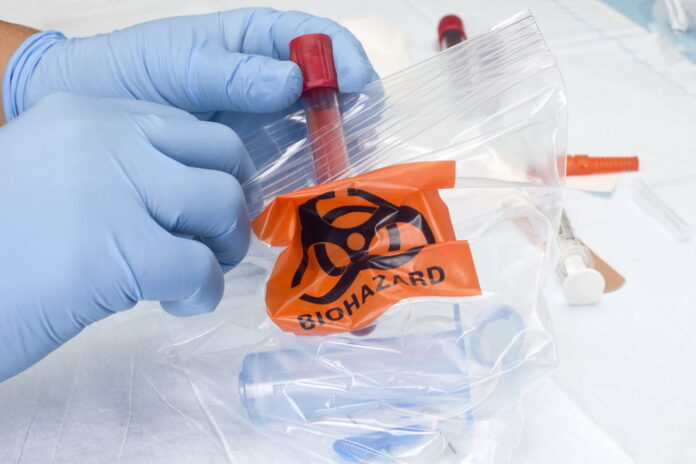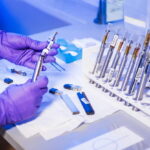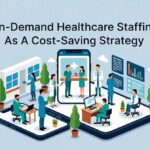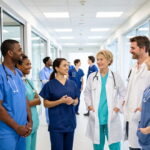Is blood a biohazard? When it comes to blood, you should treat it should be treated as a biohazard. Why? You could easily expose someone to bloodborne diseases by accident.
Even if someone washes their hands and wears gloves, they can create blood diseases if they don’t follow proper protocols.
Need to dispose of blood? To ensure no one gets infected, visit our biohazard disposal Scarborough location. We’ll take it away and ensure it goes where it needs to go.
Keep reading to learn more about the reasons why blood is a biohazard.
Why Is Blood a Biohazard?
Blood is considered a biohazard for several reasons:
Blood Can Contain Infectious Agents
Blood can contain various infectious agents, including viruses, bacteria, and parasites. These agents can be spread through contact with contaminated blood, infected body fluids, or by inhaling or ingesting contaminated items.
Infection can occur when the infectious agent enters the bloodstream and begins to reproduce. It can occur from direct contact with infected blood and other body fluids or items contaminated by an infected person or animal. Click here to learn more about Bloodborne Pathogens, transmission methods, exposure, safety considerations, etc.
Blood Can Be Difficult To Clean
Blood can be difficult to clean, especially from fabrics or porous surfaces, because it contains proteins that bind to the fibers or porous materials. These proteins can cause staining, especially if the blood has been allowed to dry before cleaning begins.
Depending on what surface or material the blood is located on, different cleaning methods may be necessary to ensure proper removal. For instance, porous surfaces like carpets and fabric upholstery may require hot water and specialized detergents to remove proteins.
Blood Can Cause Emotional Distress
The sight of blood can trigger a strong emotional reaction in many people and can even cause trauma and distress. It is common to hear of people feeling anxious, scared, and overwhelmed upon encountering a situation with blood, such as at the sight of an injury.
This emotional response is due to several factors, including our natural aversion to the color red and the threat of potential contamination by blood. It is essential to realize that these emotional reactions are genuine and to work on coping with the distress that the sight of blood can trigger.
It Can Damage Equipment
Blood can damage equipment in both the operating room and the lab. It can leave stains and cause corrosion, which can cause equipment to break down or stop working.
Blood is a protein-rich fluid, and when it comes in contact with equipment, it can leave protein deposits on the surface, leading to corrosion in the long run. In the operating room, this could make it possible for surgical tools or other medical equipment to get infected by something else. In tests done in the lab, contamination could lead to erroneous results.
Yes, It Is
Is blood a biohazard? Yes, blood is a biohazard because it can carry unseen pathogens, bacteria, and other harmful organisms. Taking precautions when working with blood, such as wearing protective gear or disposing of it properly, is the best way to protect yourself and the people around you.
Contact a professional to learn more about proper blood handling protocols and how to be safe while working with biohazards.
Did you find the information in this article helpful? If so, check out our blog for more valuable resources.
Read Also
- Creative Approaches to Alleviating Healthcare Staff ShortagesHospitals and clinics are facing staff shortages, which makes it harder to take care of patients well. Finding simple and useful solutions is very important. Easy changes like flexible work hours, good training, and chances to grow can help staff stay happy. Technology, like online doctor visits and helpful tools, can make work easier. Smart… Read more: Creative Approaches to Alleviating Healthcare Staff Shortages
- Understanding the Role of Sterilizers in Healthcare FacilitiesHave you ever wondered how hospitals keep their equipment safe enough to use on dozens of patients every day? Most people never think about what happens behind the scenes, yet these hidden steps play a huge role in patient safety. Sterilizers are part of that system, working quietly to remove harmful germs before any instrument… Read more: Understanding the Role of Sterilizers in Healthcare Facilities
- Building Healthcare Access Where It’s Needed Most: A Local First ApproachHealthcare shouldn’t depend on where you live. But in the U.S., it often does. If you’re in a big city, you likely have options. If you’re in a small town or an underserved neighbourhood, it’s a different story. To fix this, more healthcare leaders are turning to a local-first approach. That means putting clinics and… Read more: Building Healthcare Access Where It’s Needed Most: A Local First Approach
- Revolutionizing Patient Engagement: Innovative Solutions for Improved Care and Treatment SuccessNavigating healthcare system can often feel overwhelming for patients. Between appointments, prescriptions, and treatment regimens, it’s easy for crucial details to get lost in the shuffle. That’s why effective patient engagement and support solutions are more important than ever. Companies like Serva Health, with their pharma hub services, are stepping up to ensure that patients… Read more: Revolutionizing Patient Engagement: Innovative Solutions for Improved Care and Treatment Success
- On-Demand Healthcare Staffing As A Cost-Saving StrategyThis is an exciting and challenging time for the healthcare industry. Technology is advancing almost faster than humans can keep pace. New legislation is creating fresh challenges for the future of healthcare, and the shifting population demographic continues to place more pressure on healthcare facilities. Amidst these changes, healthcare facilities are facing a critical staffing… Read more: On-Demand Healthcare Staffing As A Cost-Saving Strategy
- The Benefits of Contract Labor Staffing in HealthcareThe most successful healthcare facilities today aren’t just reacting to crises—they are building workforce resilience to withstand them. Unpredictable patient demand, coupled with persistent nursing shortages, has made the traditional staffing model obsolete. Relying on mandatory overtime to cover a sudden surge in capacity is a recipe for high turnover and rising employee burnout relief… Read more: The Benefits of Contract Labor Staffing in Healthcare
- Management Reinforcement for Healthcare Providers in a Shifting SystemHealthcare is changing faster than ever. So, providers are feeling the pressure to keep up. New technology, changing patient needs, and constant rule updates make it tough for managers to stay on top. Strong leadership helps teams work better, give great care, and stay happy in their jobs. Here’s how healthcare leaders can strengthen their… Read more: Management Reinforcement for Healthcare Providers in a Shifting System








